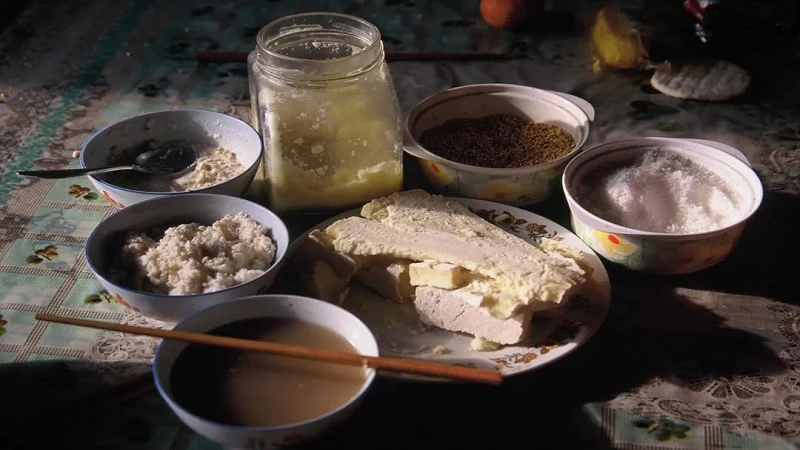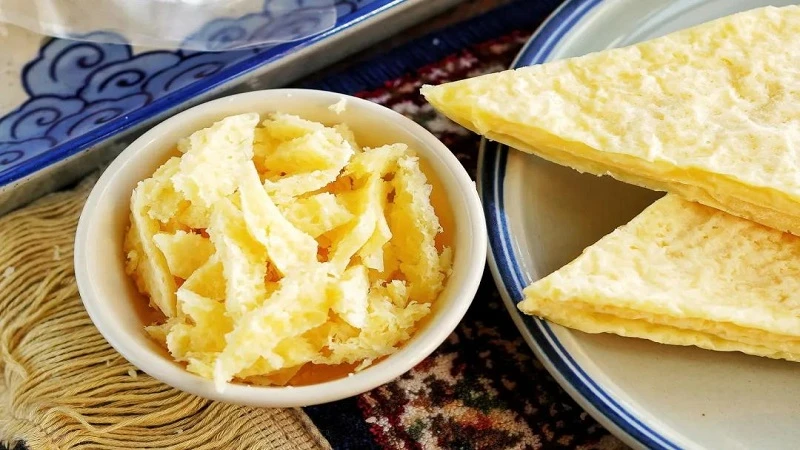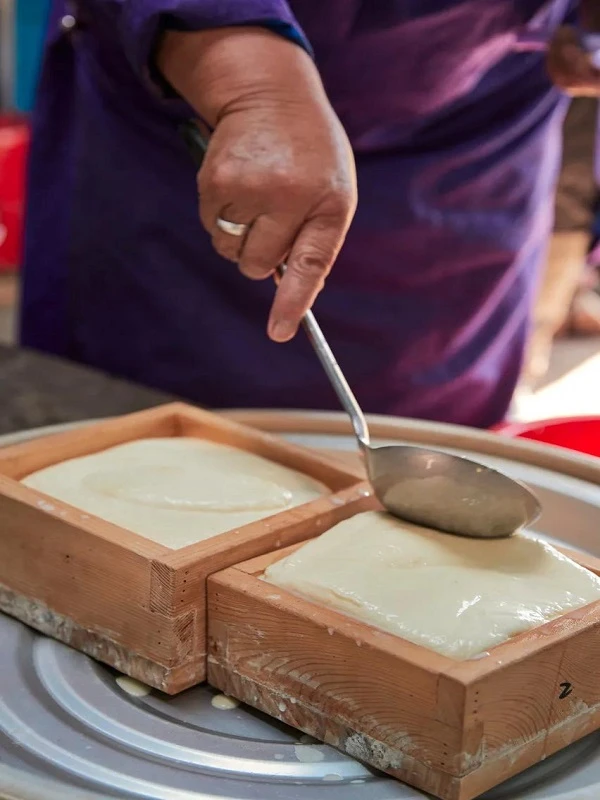Inner Mongolia, renowned for its vast grasslands and rich nomadic traditions, offers a unique and delicious culinary heritage centered around dairy products. While most people are familiar with dishes like roast lamb and hand-held meat, today we turn our attention to something special: the dairy cuisine of the Mongolian people. In Inner Mongolia, dairy is far more than just milk; it's an art form, with a rich variety of foods made from it, each with distinct flavors and uses. Let's explore the world of Mongolian dairy beyond the stereotypes and discover the intricate world of milk-based delicacies.

A Tale of Two Foods
Mongolian cuisine is divided into two main categories: Ulan Ide (Red Food) and Chagan Ide (White Food). Red food refers to meat, while white food encompasses dairy products. While many are familiar with red food such as roast lamb and beef, white food holds a special place in the hearts of Mongolians. Dairy products are integral to every meal, and in Inner Mongolia, there is a seemingly endless number of ways to consume milk.
Contrary to common misconceptions, not all of Inner Mongolia's dairy products are cheese. In fact, each dairy dish has a unique name, preparation method, and cultural significance. Let's dive into a few standout examples.
The Delights of Dairy: From Cheese to Milk Tofu
One of the most iconic dairy products is Milk Tofu (奶豆腐). Despite the name, it has no relation to the soybean-based tofu familiar in Chinese cuisine. Instead, it is a firm, flavorful dairy product made by heating and straining fermented skimmed milk. Mongolian families traditionally enjoy milk tofu either as a snack, dipped in sugar, or as an addition to their famous salty milk tea. Over time, it has evolved, with modern methods involving wooden molds to create more intricate shapes and designs.
A notable variation of milk tofu is the crispy and delicious Caramelized Milk Tofu. This dish, popular in both Inner Mongolia and northeastern China, involves frying milk tofu and coating it in caramel. The result is a golden, sweet treat beloved by both young and old. Another indulgent version, Honey Glazed Milk Tofu, sees the fried tofu drizzled with sweet syrup. The contrast of the rich dairy flavor with the tang of orange juice syrup is irresistible, despite the high-calorie content.
Traditional Mongolian Dairy: Creamy and Crisp
Another traditional treat is Nai Jiaokou (奶嚼口), often compared to Western-style cream. Made from the thick cream skimmed off freshly fermented milk, this dairy delight is rich and smooth. It is frequently paired with crispy fried rice or Chao Mi, a classic Mongolian combination. A sprinkle of sugar enhances the taste, turning this simple dish into a comforting snack. The rich aroma of the cream combined with the crispness of the fried rice creates a delightful sensory experience.
A close relative of Nai Jiaokou is Nai Pizi (奶皮子), a dairy product formed when a thin skin develops on the surface of boiling milk. This delicate layer is carefully skimmed off and dried, creating a tasty snack that is both chewy and slightly sweet. Children in Mongolian households often enjoy it on its own or mixed with fried rice.
The Hard Cheeses of Inner Mongolia
Mongolia's version of cheese is very different from what most people might expect. Known as Nai Lao or "milk cheese," it is made by boiling yogurt over low heat, draining the water, and drying the remaining solids. The result is a hard, crumbly cheese that is both sweet and tangy.
Though traditionally tough to chew, it is a popular snack for nomads who appreciate its long shelf life and portability. Modern versions are softer and more snackable, but if you try the traditional variety, be careful with your teeth!
The Allure of Butter and Milk Tea
Mongolians also use dairy to create a variety of butters and creams. Su You (酥油), or Mongolian butter, comes in two forms: yellow and white. White butter is made by churning fermented milk until it separates, while yellow butter is created by slow-cooking white butter until it turns a pale yellow color. The butter is then mixed with fried rice, sugar, and sometimes Nai Pizi to make sweet treats. The rich, creamy flavor of these concoctions makes them a must-try for anyone visiting the region.
One of the most defining features of Mongolian cuisine, however, is their version of Milk Tea (Nai Cha). Unlike the sweet milk teas that have taken the world by storm in recent years, Mongolian milk tea is savory, made with brick tea and seasoned with salt. After boiling the tea and water together, milk is added, and the drink is lightly salted. While the taste might be surprising to outsiders, Mongolians consider sweetened milk tea an aberration, preferring the rich, comforting taste of their traditional recipe.
The Quintessential Mongolian Breakfast: Guo Cha
Finally, we cannot discuss Mongolian dairy without mentioning the iconic breakfast dish, Guo Cha (锅茶), or "Pot Tea." This hearty breakfast consists of milk boiled together with a host of local delicacies: dried beef, yellow butter, milk tofu, Nai Jiaokou, Nai Pizi, and fried rice. Served alongside other Mongolian specialties like Shouba Rou (hand-held lamb) and fried dough treats, this breakfast is enough to fuel anyone for a day on the grasslands.
For Mongolians, dairy is not just sustenance—it is a deep connection to their nomadic past and a symbol of cultural identity. Milk tea, in particular, is an emotional touchstone, representing warmth, hospitality, and tradition. For anyone lucky enough to visit the grasslands of Inner Mongolia, sharing a cup of tea and some dairy delicacies with the locals is more than just a meal—it's an invitation into their way of life.
Inner Mongolia's dairy cuisine is a testament to the adaptability and creativity of its people. From the iconic milk tofu to the simple joys of milk tea, dairy has been shaped into countless forms, each with its own unique flavor and cultural significance. Whether enjoyed in a sweet caramelized form or in a savory breakfast pot, dairy remains at the heart of Mongolian culinary tradition, offering a taste of the grasslands in every bite.



